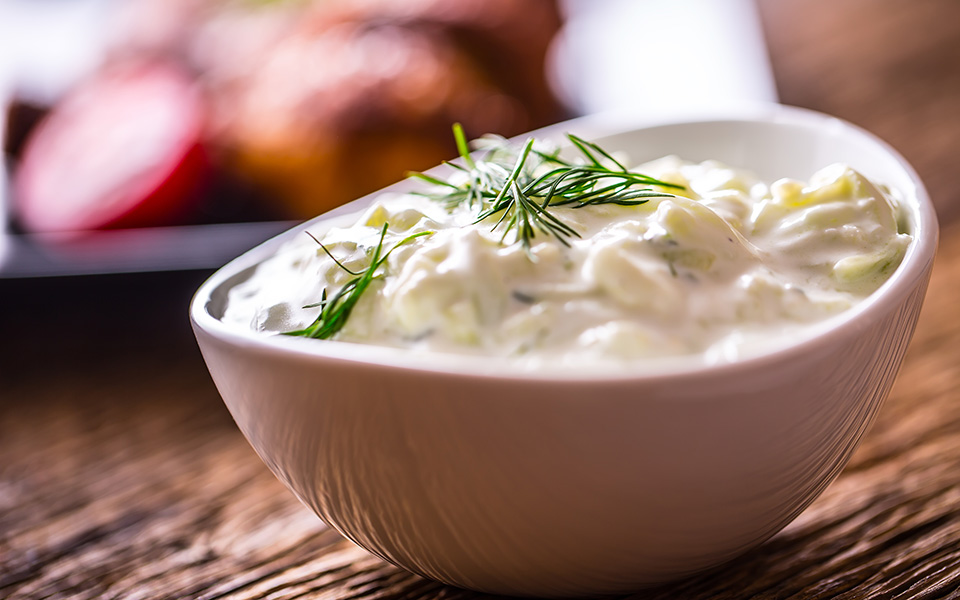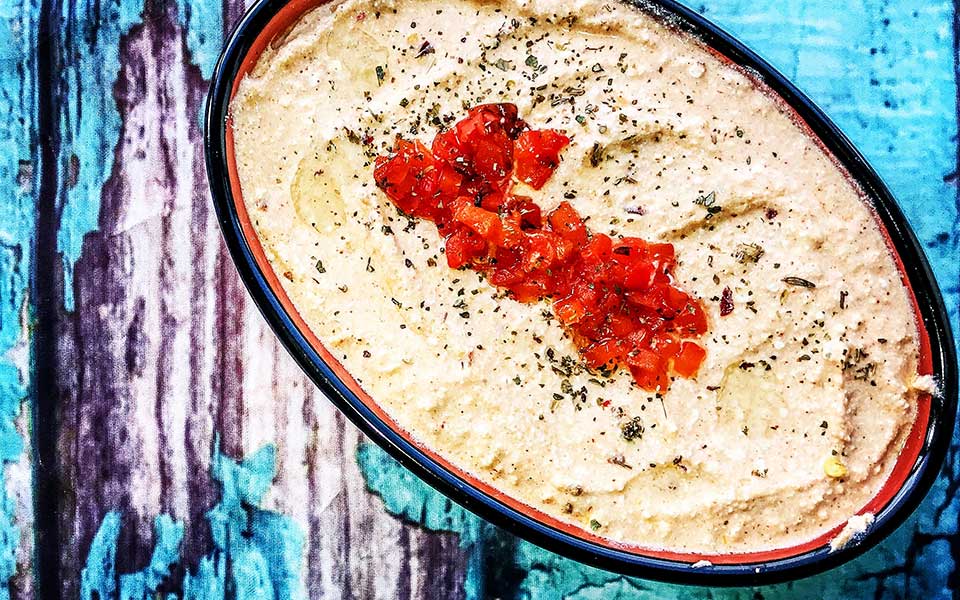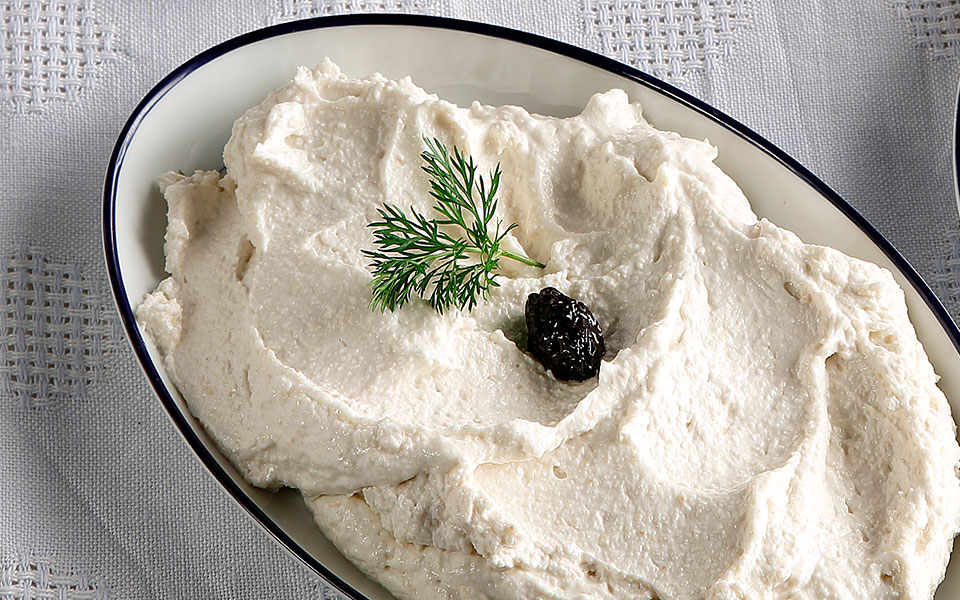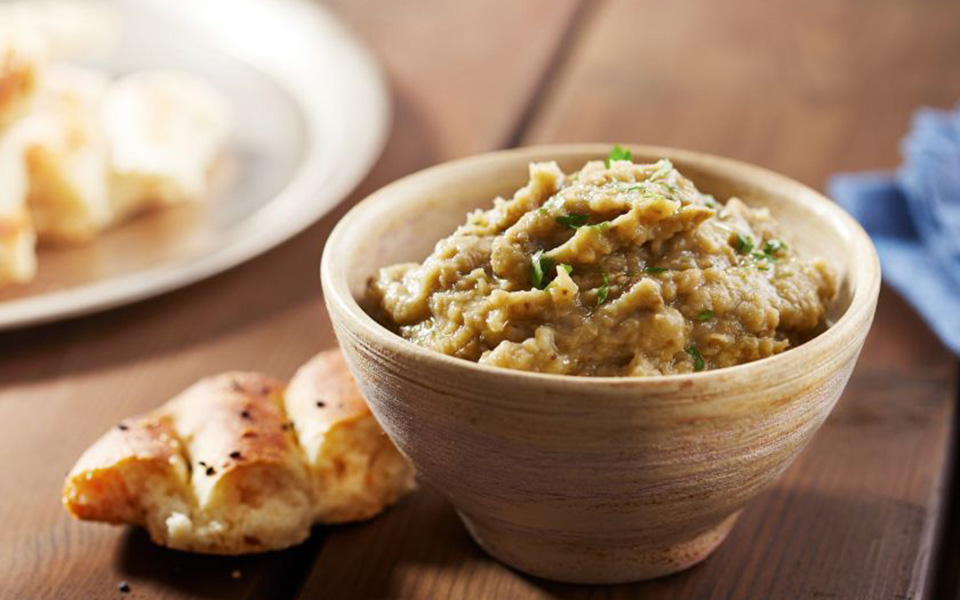Restaurant Road Trips: Four Places Worth the Drive...
This article explores four cozy Greek...

Tzatziki
© Shutterstock
Recipe by Nena Ismirnoglou
Tzatziki is a savory yogurt-based dip that can accompany virtually any dish. It is believed tzatziki was first made with the excess from yogurt production so it would not be thrown away. With a name probably derived from the Turkish “cacik”, which itself derives from the Persian term “zhazh” meaning “herb mixture”, this all-time classic is very popular in the Middle East and throughout the southern Balkans.
Peel the cucumber (you may need to cut it in half for better handling). Split the cucumber in half, lengthwise, and remove all seeds. Grate the cucumber on the large side of the grater. Gently squeeze the grated cucumber (in a paper towel, for example) to remove excess water.
Grate the garlic.
Mix and stir all the ingredients in a bowl and add salt and pepper.
Cover the bowl with a cellophane wrap and place it in the fridge for at least an hour. Save in the fridge for two days maximum.
PS: If you do not want to eat your tzatziki right away, wait before adding the fresh dill/spearmint. For a perfectly fresh taste, the herb shouldn’t be added to the mix more than 3 hours before you eat it.
2 cups strained Greek yogurt
2-3 garlic cloves
1 large cucumber
50 ml olive oil
30 to 50 ml white or red wine vinegar, depending on the acidity of the yogurt (first pour in 30 ml, taste, add more if necessary)
3 tbsp finely chopped fresh spearmint or dill
Salt, freshly ground pepper

Tirokafteri, meaning "spicy cheese"
© Shutterstock
By Niki Chrysanthidou
Also called “ktipiti” – literally meaning “beaten” – in some regions, this cheese and chili pepper dip is perfect with bread, vegetable sticks, potato chips or anything else you fancy dipping. Plus, it does not take more than 15 minutes to prepare! Here are the simple steps.
Heat the olive oil on medium heat in a nonstick frying pan. Sauté the chili peppers for 3-4 minutes, stirring well, until slightly brown. Remove from heat.
In a blender, add the chili peppers with the oil from the pan together with the cheese, yogurt and garlic if using. Mix for about 1 minute, until ingredients blend completely.
Transfer the mixture in a bowl, add the cucumber cubes and stir well. Cover with a cellophane wrap and place in the fridge until you get hungry…
4-5 fresh chili peppers of your liking, green or red, cut lengthwise, free from stems (remove/leave seeds depending on the spiciness level you desire)
500g feta cheese cut in cubes
250g cream cheese
2 tbsp strained Greek yogurt (sheep or cow)
1 clove garlic (optional)
1 small cucumber, peeled, cut in very small cubes

Taramasalata - Greek fish roe dip
© George Drakopoulos
Recipe by Christophoros Peskias
This delicious spread is made almost entirely of salted and cured fish roe, usually of cod or carp; the word “tarama” in Greek literally means “fish roe”. This traditional meze is white or pink (depending on the type of roe used) and is customarily enjoyed on Clean Monday, the first day of the Lent fast in the Eastern Orthodox tradition. Of course, you can still savor it any other day of the year to add flavor to your table.
The following recipe guides you through the preparation of a traditional white taramasalata.
Place the grated onion in a strainer, press to remove excess water and empty strainer in the blender. Add the tarama, bread and lemon juice and blend at high speed for 1 minute.
Lower the speed and gradually add olive oil. If the mixture becomes too thick, add water and continue blending until creamy, mayonnaise-like texture is reached.
“Etimi” (ready)!
120g white cod roe
200g stale bread, without crusts, soaked in water, then blotted to remove excess moisture
80ml lemon juice (or less for those who prefer their dip less tart)
1 small onion, grated

Melitzanosalata
© Shutterstock
Recipe by Christophoros Peskias
This simple yet aromatic puree was traditionally eaten in the summer, as eggplant is a warm-weather vegetable. Luckily today, greenhouses mean they can be grown all year round, allowing us to prepare this finger-licking meze in any season.
The eggplants are ideally cooked on an outdoor charcoal barbecue as this give them a pleasant smokey flavor. Alternatively you can char them on a gas ring, or under the grill in the oven.
If you are using a barbecue, light the charcoal until it is burning well and place the eggplants directly on the hot coals. If you are using a gas stove, place the eggplants directly on the burner on high heat. If you are using an oven grill, pre-heat at the highest temperature and place the eggplants under the grill. Wait until one side is charred and flip over. The eggplants will be ready after 8-10 minutes. Their skin should be black and charred and their flesh should be soft – pierce them with a skewer to check they have softened. When ready, place them in a colander standing up and let them cool for 10 minutes.
Peel the eggplants: holding an eggplant by the stem, place it under running water and remove the skin (don’t worry, the flesh will not fall apart). If the eggplants have seeds, slice them open on a cutting board and remove the seeds. After cleaning each eggplant, place it back into the colander. Salt the peeled eggplants and mix gently with a fork – do not mash them at this point. Let the salted eggplants sit for 15 minutes in the colander in order for them to lose some of their water content.
Next, place eggplants in a bowl, add the garlic, oil, lemon juice, salt and pepper and stir again with a fork. And that’s it!
You can enjoy meltizanosalata alone on toasted bread or accompanied by anchovies or sardines – truly a match made in heaven!
1.5kg Italian eggplants
1 clove garlic, crushed
Juice from 1 small lemon
100ml olive oil

Skordalia - Greek garlic dip
© via www.gastronomos.gr
Recipe by Giannis Lemonis
Skordalia is one of the most basic and widely eaten spreads around Greece. In its simplest form, it consists of a garlic purée mixed with olive oil. Garlic has long been considered a powerful ingredient with therapeutic powers, as well as an aphrodisiac. Today known as “skordalia” in ancient Greece this spread was known as “myttotos”. The recipe presented below teaches you how to prepare a true myttotos in the manner of the ancients.
Place the garlic cloves, the garos (or salt and pepper) and the egg yolk in a mortar and pound. Add the leeks, the cheese, and continue pounding while gradually adding olive oil until the mixture becomes thick and smooth. Ready!
Enjoy with fish, vegetables, on a slice of bread, or anywhere else your imagination may take you.
These recipes were originally published in Greek on www.gastronomos.gr.
4-5 cloves garlic
1 egg yolk
2 leeks (the white part), boiled, finely chopped
200g semi-soft white cheese (such as a manouri or anthotyro), crumbled
½ cup olive oil
2-3 tbsp garos* (or salt and pepper)
*Garos: liquid extract used in ancient Greece, made from the fermentation of fish in salt. Today, in stores selling Asian products, you can find “nam pla” (fish sauce) which is produced in the same way as garos and will add a unique flavor to your myttoto.
This article explores four cozy Greek...
Explore the tavernas of Nikaia, Moschato,...
Since 1928, this family-run wine taverna...
In Corinthia, just an hour from...